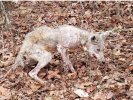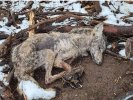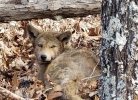A few of us are old enough to remember people like S. Stanly Hawbecker , Vern Dorn , James Lucero , Gregerson , Slim Pederson and many others that have written about trapping and snaring , using lures and baits . There were people that made good calls , Murry Burnham , Major Boddicker , Johnny Stewart and many others . They all at one time or other wrote books and made VHS tapes on their arts to teach others how they did what they did . Some of them are still around and doing it still . You can still find Hawbecker lures and baits , get Gregerson snares and O'Gorman still gives instruction as well as sells lure and baits , as far as I know . I don't know if he and his wife still sell instructional videos . I haven't talked with any of them at O'Gorman's in several years . People like Bill Austin , Vern Dorn, Dan Thomson have passed on now and so has the chance for us to learn in person from them but there is still written material of theirs around as well as some videos with some good info of theirs on them . The best advice I can think of to offer any one starting out or wanting to learn more about anything is be a sponge find the best you can , ask questions listen to what they have to say , don't think you already know enough or more then them if what they say differs from what you think then study some more don't argue with them about it say why you think the way you do and discuss it to see why they think that way you may both learn something that way .



